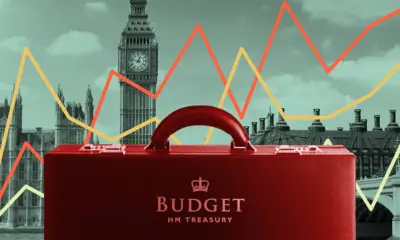Fashion
Fashion and Finance: How Inflation Is Changing Retail Buying Power

In 2025, rising inflation is reshaping the dynamics of retail fashion in the UK, altering consumer spending patterns and influencing brand strategies. Analysts from the Office for National Statistics (ONS), Bloomberg, and Reuters note that increased costs of raw materials, logistics, and energy are impacting pricing, while households face tighter budgets. The intersection of fashion and finance highlights the evolving challenge for brands: maintaining profitability while preserving consumer demand in a climate of reduced buying power.
Consumer Spending Patterns and Retail Behavior
Households are increasingly prioritizing essential goods over discretionary purchases, including high-end and mid-market fashion. Analysts report that apparel spending growth slowed to 2.1 percent year-on-year in Q3 2025, compared with 5.5 percent in 2024. Discounting, promotions, and value-oriented product lines have become crucial tools for retailers to maintain sales volumes.
Despite tighter budgets, demand for sustainable, versatile, and high-quality items remains robust. Analysts suggest that consumers are opting for fewer but more durable purchases, shifting towards slow fashion and conscious spending. Multi-channel retail strategies, including e-commerce, direct-to-consumer platforms, and hybrid in-store experiences, are helping brands capture a diverse demographic while navigating price sensitivity.
Pricing Strategies and Inflation Mitigation
Brands are responding to inflationary pressures with innovative pricing strategies. Dynamic pricing, bundling, and loyalty programs allow retailers to maintain revenue without alienating cost-conscious consumers. Analysts highlight that luxury brands have maintained price points with minimal discounting, relying on brand equity and exclusivity to retain purchasing power. Conversely, fast fashion and mid-market brands have adjusted product ranges and promoted value-based options to align with household budgets.
Supply chain efficiency has also become a critical factor. Companies leveraging local sourcing, digital inventory management, and predictive analytics can reduce cost pressures, ensuring stable pricing while maintaining margin integrity. Analysts suggest that these measures are essential for navigating inflation without eroding brand reputation.
Digital and Omnichannel Retailing
The integration of digital platforms is pivotal in offsetting reduced in-store footfall. Retailers are investing in e-commerce, mobile apps, and interactive digital experiences to engage consumers, provide personalized recommendations, and streamline the purchasing journey. Analysts report that brands using AI-driven personalization have seen a 12–15 percent increase in online conversion rates in 2025, underscoring the importance of targeted digital engagement.
Hybrid shopping models, which combine in-store experiences with online convenience, are also gaining traction. Brands offering click-and-collect, virtual try-on, and AR-enhanced product visualization enhance convenience, reduce friction, and retain customer loyalty amid inflationary pressures.
Luxury Sector Resilience
Luxury fashion remains more resilient than mass-market segments. Analysts from Bloomberg and the BPI note that affluent consumers maintain discretionary spending, viewing luxury goods as both status symbols and long-term investments. Limited-edition releases, premium craftsmanship, and sustainable practices enhance perceived value, allowing brands to preserve pricing despite inflation.
Luxury houses are also leveraging digital exclusivity. NFT-based fashion drops, blockchain-authenticated collectibles, and VIP digital experiences provide added value without relying on traditional cost structures, enabling brands to engage tech-savvy audiences while maintaining margins.
Impact on Retail Employment and Operations
Inflationary pressures affect not only consumer behavior but also retail operations. Analysts report that higher energy, logistics, and labor costs are prompting retailers to optimize staffing, automate routine processes, and improve operational efficiency. Technology adoption, including AI-driven inventory management, automated checkouts, and predictive analytics, is reducing overhead and sustaining profitability despite cost inflation.
Retailers are also investing in workforce reskilling, particularly in digital sales, customer experience, and supply chain management, ensuring that employees can adapt to new operational demands and support evolving business models.
Global Supply Chain and Sourcing Challenges
Rising global commodity prices and ongoing logistics disruptions contribute to inflationary pressures on fashion brands. Analysts highlight that UK retailers sourcing from international suppliers face higher import costs, longer lead times, and currency volatility. To mitigate these challenges, companies are diversifying suppliers, adopting nearshoring strategies, and leveraging multi-modal logistics solutions.
Sustainability considerations further influence sourcing decisions. Brands increasingly prioritize eco-friendly materials and local production to reduce carbon footprints while managing costs, aligning operational efficiency with consumer demand for ethical fashion.
Future Outlook: Inflation-Responsive Fashion Strategies
Looking ahead, inflation is expected to remain a defining factor for retail strategy through 2025 and beyond. Analysts predict that brands will continue to adopt flexible pricing, diversified product ranges, and omnichannel engagement to maintain sales volumes. Slow fashion, sustainable sourcing, and digital innovation will be key drivers in capturing consumer loyalty.
Brands that successfully combine operational efficiency, digital engagement, and brand storytelling will be best positioned to navigate a landscape where consumer purchasing power is constrained by inflation. Analysts suggest that transparency in pricing, ethical practices, and innovation will differentiate market leaders from competitors in the UK fashion sector.
Conclusion
The UK fashion industry in 2025 illustrates the complex interplay between inflation, consumer behavior, and brand strategy. Rising costs and reduced discretionary spending challenge retailers to innovate across pricing, operations, and digital engagement. At the same time, sustainability, ethical practices, and experiential retail provide opportunities to enhance value perception and retain consumer loyalty. Analysts conclude that brands balancing financial discipline with creativity and transparency will thrive, demonstrating resilience and adaptability in a landscape defined by inflation and evolving consumer expectations.




















